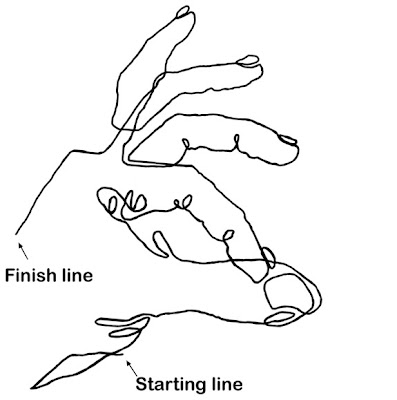Lines, the basic building blocks of drawing, can either be visually rendered or simply implied as a division between spaces or values. All shading styles used throughout Drawspace are made up of the three different types of lines, straight, curved, or angle. Hence, becoming familiar with lines is an integral aspect of learning how to draw. Numerous exercises and projects focus on becoming familiar with and using lines, to improve various drawing related skills.
Sunday, February 6, 2011
Saturday, February 5, 2011
Seeing Light and Shadow
Seeing Shapes of a Horse's Head
Seeing Shapes in a Photo of a Dog's Head
Grendel Gremlin
Seeing Values
Blind Contour Drawing

Learning to draw accurately depends on many hours of practicing the skill of coordinating your visual skills with your drawing hand, until your eyes and hand work together effortlessly. This fun project enhances your observation skills by encouraging you to very closely examine your subject. In essence, you draw by looking only at your drawing subject, rather than your subject and your pencil and paper.
Subscribe to:
Comments (Atom)





